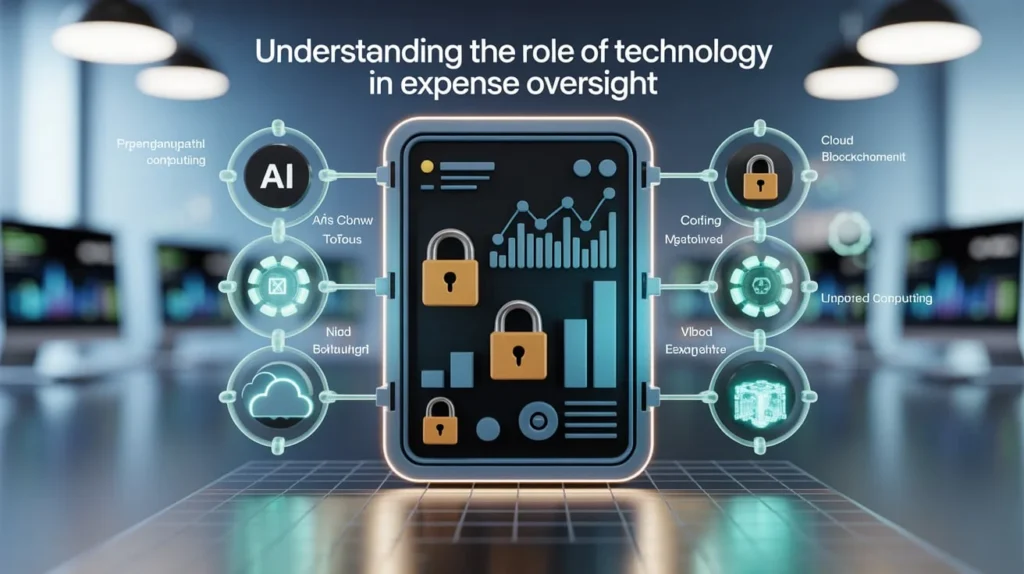Technology plays a crucial role in modern businesses’ financial planning. As companies adopt cloud systems, SaaS tools, and smart devices, recurring and hidden tech costs increase.This is where technology in expense oversight becomes a vital strategy.
It helps organizations gain transparency, reduce waste, and accurately forecast IT budgets. Without structured monitoring, these expenses spiral out of control.
Financial Challenges of Uncontrolled Tech Spending
Many companies don’t realize how much money they lose through unmanaged technology expenses. Cloud overprovisioning, idle subscriptions, or unexpected data overage charges can severely impact monthly budgets. When left unchecked, small leaks in IT spending add up over time.
With technology expense management, these risks can be minimized. Businesses can ensure that every tech dollar is spent wisely and supports actual needs.
Smart Strategies for Reducing IT Overspending
By implementing proactive methods, businesses can lower unnecessary expenses and manage resources more effectively. Here are three practical approaches that deliver results:
First, audit existing tools and services. Many companies continue paying for software that employees no longer use. Regular audits uncover these gaps and enable better planning.
Second, consolidate vendors. If you use five different communication tools, it’s time to streamline. Bundled packages or enterprise suites often cost less and simplify management.
Third, automation for tracking and reporting should be adopted. Technology expense management platforms automatically monitor spending and notify you of billing anomalies.
Key tips to implement:
- Conduct monthly audits of licenses and subscriptions
- Monitor telecom and cloud usage trends
- Set up alerts for contract renewals and billing changes
- Standardize procurement policies across departments
How Cloud Cost Management Impacts Your Bottom Line
Cloud platforms have revolutionized how businesses operate. However, they can also cause unexpected financial strain. Many teams deploy cloud services without knowing the real costs behind storage, data egress, or unused resources.
Cloud cost management, a vital part of technology expense management, gives organizations visibility. It lets them scale usage based on demand, eliminate waste, and make smarter cloud investments.
Having cost tracking in real time helps IT leaders take immediate action. It also ensures alignment with business goals while staying within budget.
Streamlining Software Licensing and Subscriptions

In large companies, dozens or even hundreds of software licenses go unused yearly. This is common in fast-growing teams where departments purchase apps independently.
Technology expense management tools allow IT leaders to centralize control. You can monitor subscription renewals, usage analytics, and user activity. As a result, renewals become strategic decisions rather than reactive payments.
Furthermore, centralized visibility prevents duplicate purchases and improves negotiation power with vendors.
Reducing Telecom Costs with Smarter Analytics
Telecom expenses are often overlooked. However, mobile plans, internet services, and VoIP systems can consume much of the tech budget. Most organizations don’t have visibility into how much each department or employee is using.
With the right analytics tools, businesses can track usage patterns, overage charges, and unoptimized data plans. Telecom expense management also allows firms to renegotiate contracts with better terms.
Integration of AI in Expense Management Platforms
Artificial intelligence is transforming how businesses track their spending. AI-based technology expense management platforms analyze vast data sets to identify anomalies, trends, and cost-saving opportunities.
For instance, AI can detect that one department is using 10 times more bandwidth than others. Or it may flag a rarely used SaaS product that is still renewed each month. These insights help IT teams make informed, proactive decisions.
Over time, AI learns your organization’s usage habits and makes suggestions for optimizing costs more efficiently.
Benefits of Centralized Expense Visibility
When all your tech expenses are in one place, decision-making becomes faster and smarter. Centralized dashboards allow managers to see total spend across devices, users, departments, and tools.
This visibility improves forecasting, helps with compliance, and supports strategic planning. You’ll know exactly where to cut costs without sacrificing performance or growth.
Moreover, finance teams can collaborate more easily with IT and procurement. This alignment ensures smarter investments and fewer surprises.
Additional benefits include:
- Faster detection of cost anomalies
- Easier budgeting and forecasting
- Better vendor contract negotiations
- Streamlined reporting for audits
Avoiding Common Mistakes in Tech Budgeting
Even with a plan in place, many businesses fall into traps. One major mistake is not tracking shadow IT when employees use tools without approval. These hidden apps drain resources and open up security risks.
Another issue is failing to align tech purchases with business goals. Buying every trending tool leads to bloated budgets and low ROI.
Technology expense management reduces these mistakes. It enforces accountability, ensures proper approvals, and connects spending to strategy.
Choosing the Right Technology Expense Management Solution
Not all tools are created equal. When selecting a platform, consider one that integrates with your existing systems, such as ERP, cloud services, and invoicing software. Also, ensure it offers real-time tracking, AI-powered analytics, and user-friendly dashboards.
A scalable solution can grow with your business and help you adjust to new technologies, vendors, and pricing models.
Future Trends in Managing Tech Expenses
The future of technology expense management is automation, intelligence, and agility. Managing costs will get more complex with remote work, multi-cloud environments, and global operations.
Here are some trends to watch:
- AI will drive predictive cost modelling
- Unified platforms will combine telecom, cloud, and software tracking
- Integration with finance and procurement tools will become standard
- Real-time alerts and adaptive dashboards will improve responsiveness
Conclusion:
Technology in expense oversight is not just a trend it’s a necessity. Businesses that ignore their tech spending face rising costs, inefficiencies, and lost opportunities.
Companies can achieve financial control and sustainable growth by adopting smart strategies, leveraging automation, and staying proactive.
Start small, stay consistent, and evolve with your needs. Because in a world driven by technology, managing expenses is managing success.
Frequently Asked Questions:
What is the main role of technology in expense oversight?
To track, control, and optimize IT-related expenses across the organization.
How does it help with budgeting?
It provides detailed spending insights, supporting accurate forecasting and better financial decisions.
Is it only for large enterprises?
No. Small and mid-sized businesses also benefit from managing their tech costs efficiently.
Can these tools detect billing errors?
Yes. Most platforms include automated audits and alert systems to flag inconsistencies.
How do I start implementing it?
Begin with an audit of your current tech stack and choose a management tool that fits your needs.




